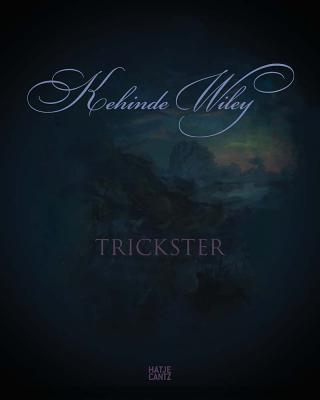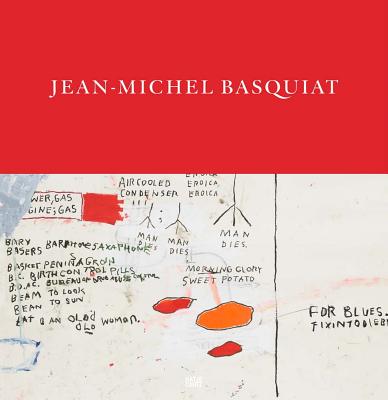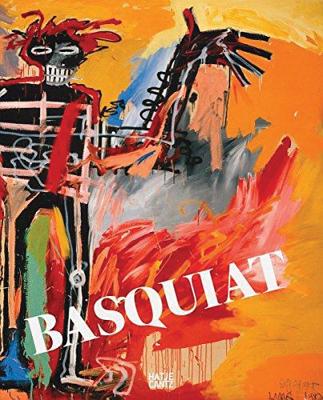4 Books Published by Hatje Cantz Verlag on AALBC — Book Cover Collage
 Jean-Michel Basquiat: Art and Objecthood
Jean-Michel Basquiat: Art and Objecthood
by Ben OkriHatje Cantz (Dec 13, 2022)
Read Detailed Book Description
The first book on Basquiat’s ingenious uses of found objects and unconventional materials.
Bringing together a range of unconventional painted supports and found-object sculptures, Jean-Michel Basquiat: Art and Objecthood provides an innovative, in-depth look into the artist’s sculptural practice. In addition to painting and drawing on everything within his domestic spaces—refrigerators, chairs, cabinets—Basquiat made use of discarded windows and doors, mirrors, wood boards, and subway tiles in his earliest creations. In a 1985 interview with Becky Johnston and Tamra Davis, he explained: “The first paintings I made were on windows I found on the street. And I used the window shape as a frame, and I just put the painting on the glass part and on doors I found on the street.”
Jean-Michel Basquiat: Art and Objecthood borrows its title from the influential 1967 essay by renowned art historian Michael Fried, who critiqued Minimalism for its dogmatic separation between “art” and “object,” arguing that its presentation of isolated objects as art was theatrics rather than true art, which for Fried implied the unity of art and object. Invoking Fried’s stance, this book invites viewers to consider the debate on art and objecthood as a lens through which to consider Basquiat’s uses of objects. The book also demonstrates the extent to which these uses reveal his dedication to the struggle against social inequality and his profound engagement with the politics of race in the US.
 Kehinde Wiley Trickster
Kehinde Wiley Trickster
by Kehinde WileyHatje Cantz (Apr 21, 2020)
Read Detailed Book Description
"As with most great art, Kehinde Wiley’s portraits reflect the time and place in which they were created. They also comment on the history of portraiture, specifically upending traditional European representations of power and beauty. The paintings are distinguished not only by their subjects—young black men cloaked in hip-hop couture—and the technical gifts of their creator, which are considerable, but in their tremendous (and somewhat humorous) appeal." "ForeWord
""Kehinde Wiley’s portraits of men of color, portrayed as kings, knights, or saints out of Western history paintings, juxtapose issues of race and gender with ideas of power, and ask important questions about the role of young black males today. "Kehinde Wiley"…is a great introduction to the celebrated portrait painter. It’s a perfect coffee table book, with great content." " The Artblog
""This is the first monograph on Wiley, complete with gilt-edged pages and essays by art historians, and it’s the kind of art you wind up talking about as much as you look at it…fascinating." " Star Ledger
"
 Jean-Michel Basquiat: Words Are All We Have
Jean-Michel Basquiat: Words Are All We Have
by Jean-Michel BasquiatHatje Cantz (Nov 22, 2016)
Read Detailed Book Description
Language in the art of Jean-Michel Basquiat, from graffiti to word as motifIn the wild New York of the 1980s, Jean-Michel Basquiat was the first African-American artist to receive art-world attention. The complexity and trailblazing innovative power of his paintings has been widely discussed, but this book focuses on the treatment of language in Basquiat’s ouevre. With its complex structures, spontaneous rhythms and sampled, collage-like manifestations, his work was drawn into the orbit of the Beat Generation poets and the protagonists of the musical avant-garde. The multitalented Basquiat created a shimmering, syncopated fabric of images and text, which the American curator and critic Robert Storr aptly called “eye rap.” It was with this unpretentious and spontaneous way of working that Basquiat rewrote art history.
 Jean-Michel Basquiat
Jean-Michel Basquiat
by Dieter Buchhart, Glenn O'Brien, Jean-Louis Prat, Susanne Reichling, and Jean-Michel Basquiat
Hatje Cantz (Nov 30, 2010)
Read Detailed Book Description
The first African-American artist to attain art superstardom, Jean-Michel Basquiat (1960-1988) created a huge oeuvre of drawings and paintings (Julian Schnabel recalls him once accidentally leaving a portfolio of about 2,000 drawings on a subway car) in the space of just eight years. Through his street roots in graffiti, Basquiat helped to establish new possibilities for figurative and expressionistic painting, breaking the white male stranglehold of Conceptual and Minimal art, and foreshadowing, among other tendencies, Germany’s Junge Wilde movement. It was not only Basquiat’s art but also the details of his biography that made his name legendary—his early years as "Samo" (his graffiti artist moniker), his friendships with Andy Warhol, Keith Haring and Madonna and his tragically early death from a heroin overdose. This superbly produced retrospective publication assesses Basquiat’s luminous career with commentary by, among others, Glenn O’Brien, and 160 color reproductions of the work.
Jean-Michel Basquiat was born in Brooklyn, New York, to a Puerto Rican mother and a Haitian father—an ethnic mix that meant young Jean-Michel was fluent in French, Spanish and English by the age of 11. In 1977, at the age of 17, Basquiat took up graffiti, inscribing the landscape of downtown Manhattan with his signature "Samo." In 1980 he was included in the landmark group exhibition The Times Square Show; the following year, at the age of 21, Basquiat became the youngest artist ever to be invited to Documenta. By 1982, Basquiat had befriended Andy Warhol, later collaborating with him; Basquiat was much affected by Warhol’s death in 1987. He died of a heroin overdose on August 22, 1988, at the age of 27.
